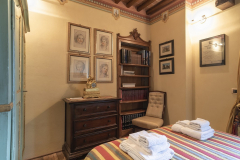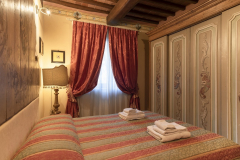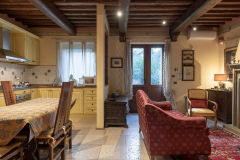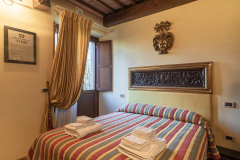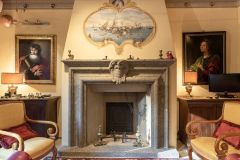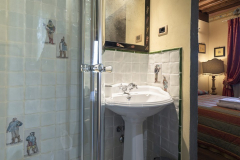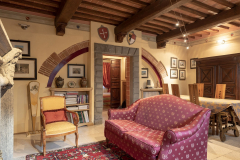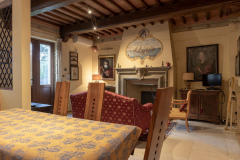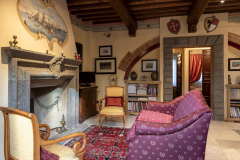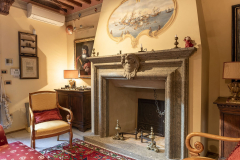Il conte ugolino
IL CONTE UGOLINO is an apartment with 2 double bedrooms, living room with fireplace and large kitchen.
An apartment that celebrated Pisanity could not be missing in Pisa. And what more discussed person than Count Ugolino also mentioned by Father Dante in his Divine Comedy?
On the fireplace enclosed in a fan the fresco that recalls the battle of Meloria from which the misadventures of Ugolino della Gherardesca began; on the left a painting from the 1600s portrays Conte Ugolino thoughtfully with his skin burnt by the sun of a thousand battles. The living room on the upper wall has a fret where the coats of arms of the Pisan noble families stand out and on the portal, dividing it with the sleeping area, the coat of arms of Pisa and that of the Della Gherardescas.
In the two small bookcases in the living room there is a collection of books on Pisa, on the life of the medieval city, on the Knights of Santo Stefano and on the Gioco del Ponte. On the walls, mid-19th century prints by Grassi depicting Pisan monuments. Two rarities in the two niches: a print by Grassi of the Luminaria di San Ranieri and a watercolor by the miniaturist of the English royal house, depicting the Piazza dei Miracoli, both from the mid-1800s.
In the hallway that leads to the two bedrooms, closed by 2 period Tuscan ashlar doors, a satirical watercolor from 1926 by the illustrator of the university student newspaper “Il Campano”, which represents the Fascist hierarch of the time, on horseback, in front to the Church of San Francesco.
The “Gioco del Ponte” room has a double bed surmounted by a 17th century dorsal of the Marcello family, from Veneto, with its coat of arms and above the dogal dome, signifying that this family expressed a doge who governed Venice in 1473. The bathroom with shower is nice, where the characters of the famous Gioco del Ponte are represented on the ceramics.
The “Dame e Cavalieri” room has a bathroom with a “Guelfa” door probably coming from a residence of Cardinal Solari and a headboard built with the front panel of a chest decorated with cherubs and heraldic coat of arms.

